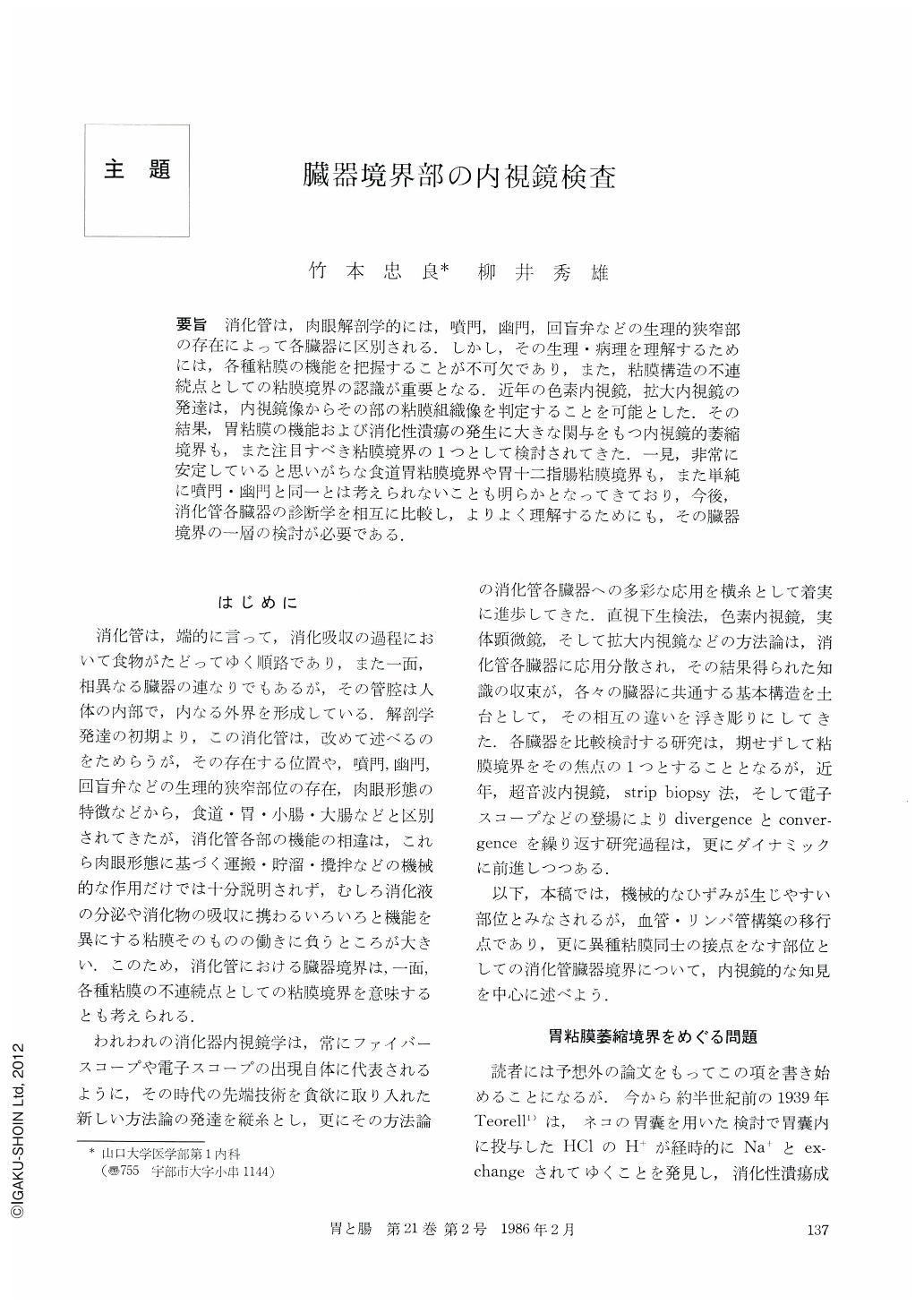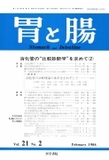Japanese
English
- 有料閲覧
- Abstract 文献概要
- 1ページ目 Look Inside
要旨 消化管は,肉眼解剖学的には,噴門,幽門,回盲弁などの生理的狭窄部の存在によって各臓器に区別される.しかし,その生理・病理を理解するためには,各種粘膜の機能を把握することが不可欠であり,また,粘膜構造の不連続点としての粘膜境界の認識が重要となる.近年の色素内視鏡,拡大内視鏡の発達は,内視鏡像からその部の粘膜組織像を判定することを可能とした.その結果,胃粘膜の機能および消化性潰瘍の発生に大きな関与をもつ内視鏡的萎縮境界も,また注目すべき粘膜境界の1つとして検討されてきた.一見,非常に安定していると思いがちな食道胃粘膜境界や胃十二指腸粘膜境界も,また単純に噴門・幽門と同一とは考えられないことも明らかとなってきており,今後,消化管各臓器の診断学を相互に比較し,よりよく理解するためにも,その臓器境界の一層の検討が必要である.
Gastrointestinal tract can be anatomically devided into several different parts by physiological stenotic portions such as cardia, pylorus and ileocecal valve.
However, to understand their physiology and pathology, it is essential to study function of their different mucosae and to recognize their junctional zone as discontinuity of mucosal structure. Recent development of endoscopic dye-spraying method and magnified endoscopy made us possible to judge histological features of the mucosal junctions by endoscopy.
As the results, an endoscopic atrophic border of the gastric mucosa, which is closely related to gastric mucosal function and development of peptlc ulcer, has been also studied as one of the important mucosal border.
Gastroesophageal and gastroduodenal mucosal junctions, which seem to be quite stable mucosal junctions, were found not to be simply the same as pylorus and cardia. Therefore, further study on mucosal junctions of the gastrointestinal tract should be conducted to understand more about various gastrointestinal mucosae.

Copyright © 1986, Igaku-Shoin Ltd. All rights reserved.


